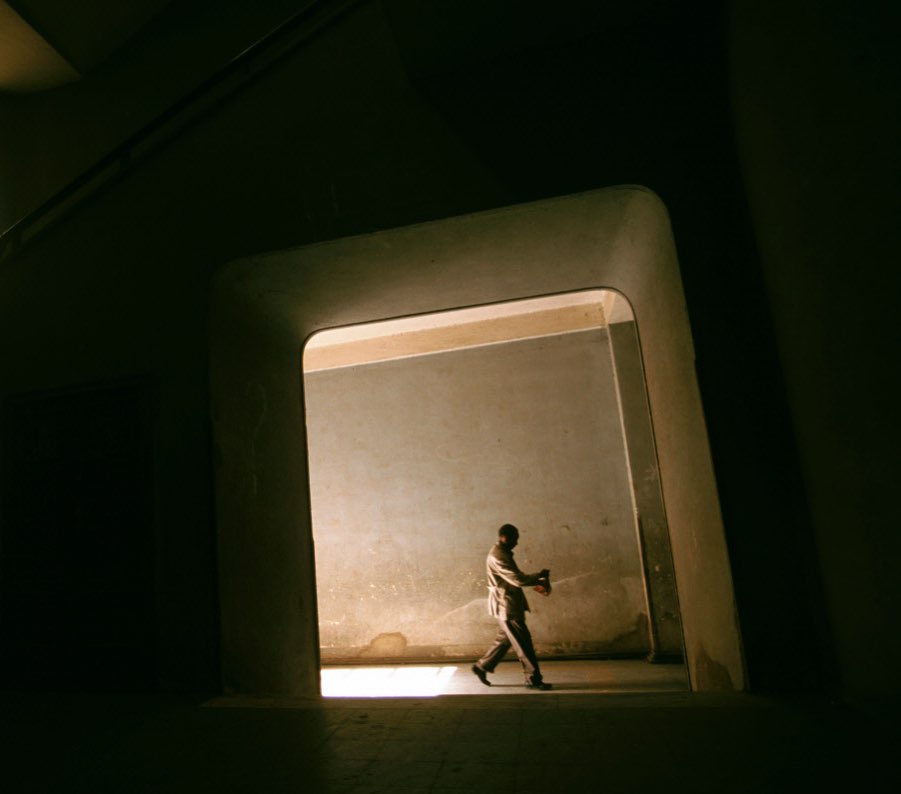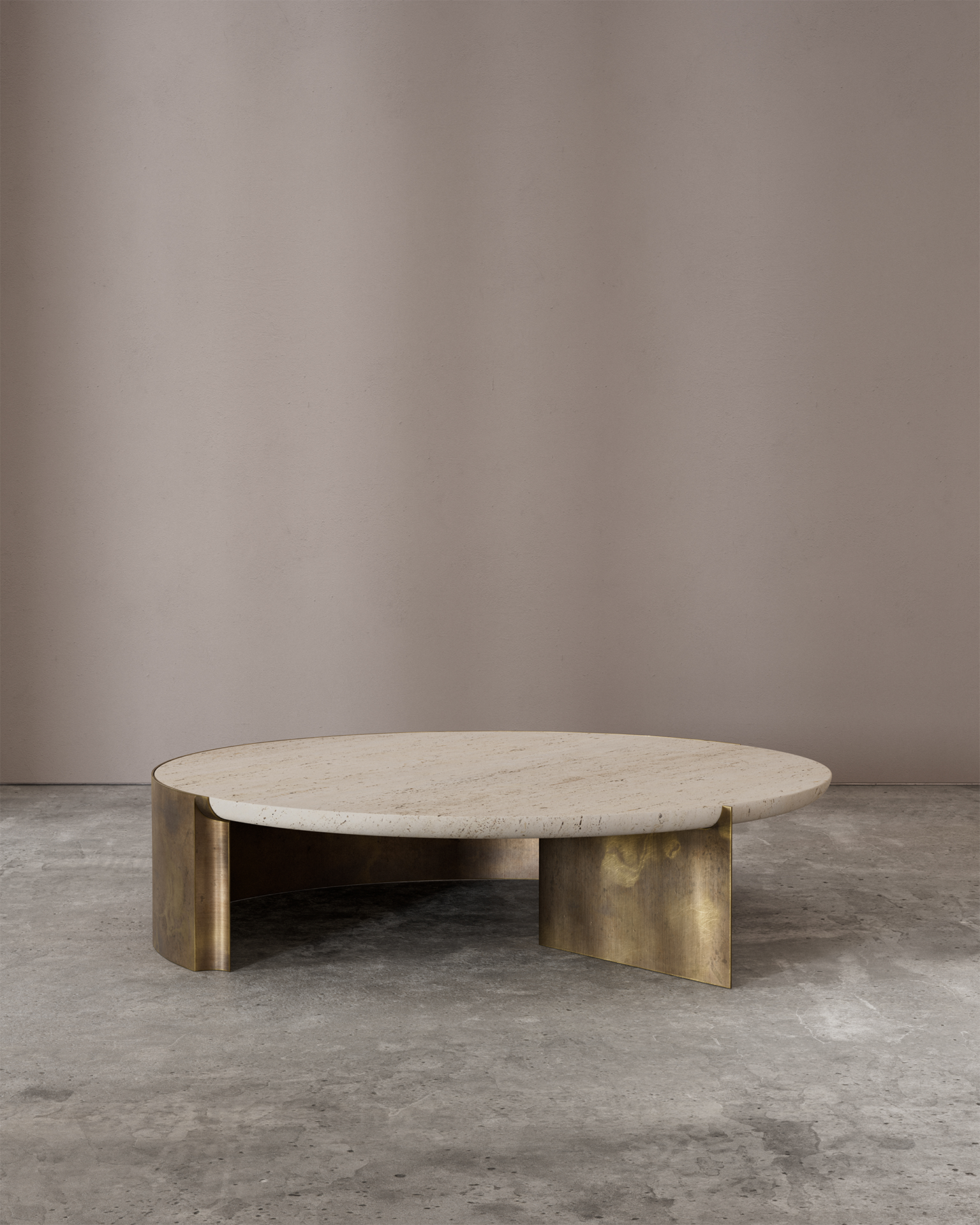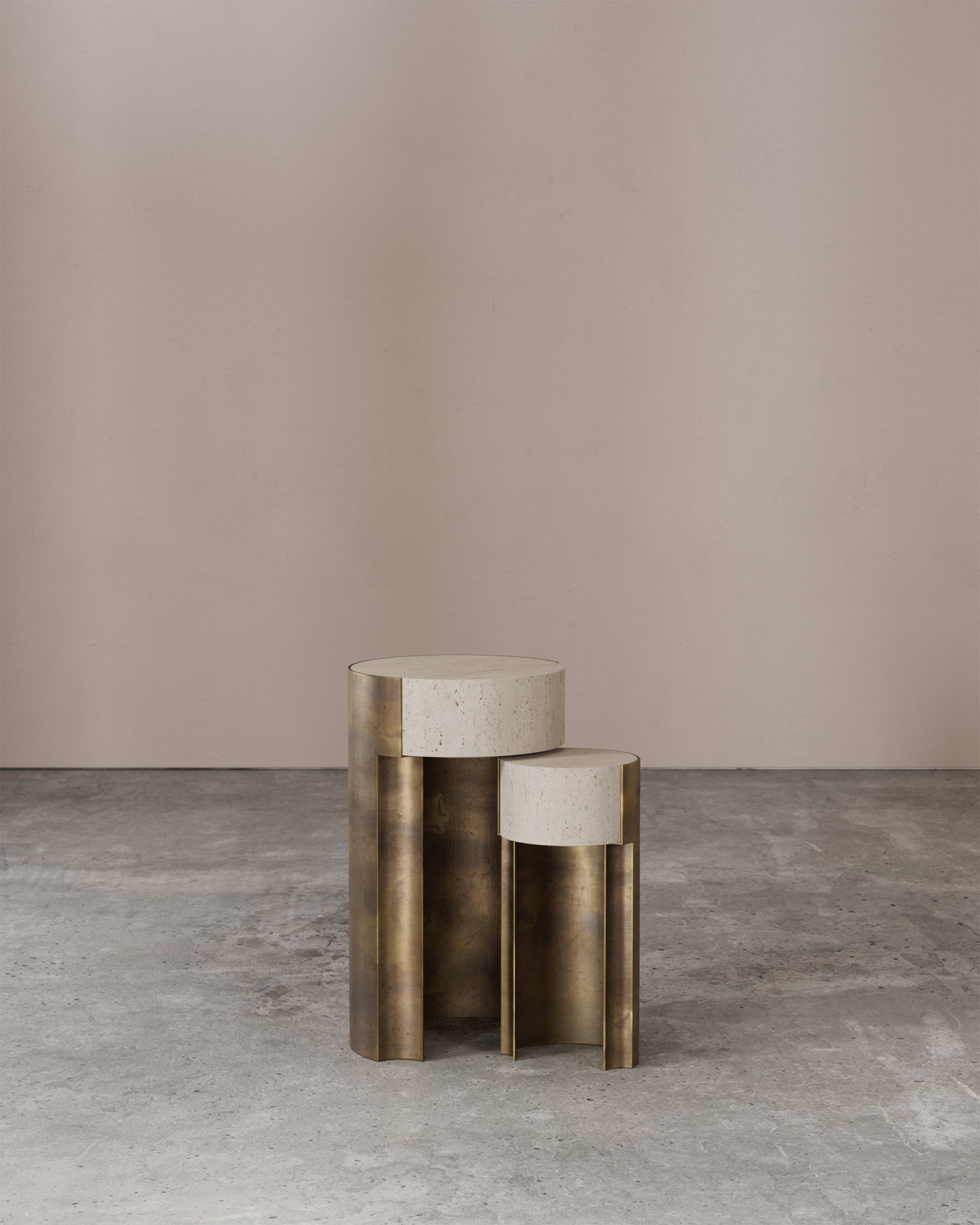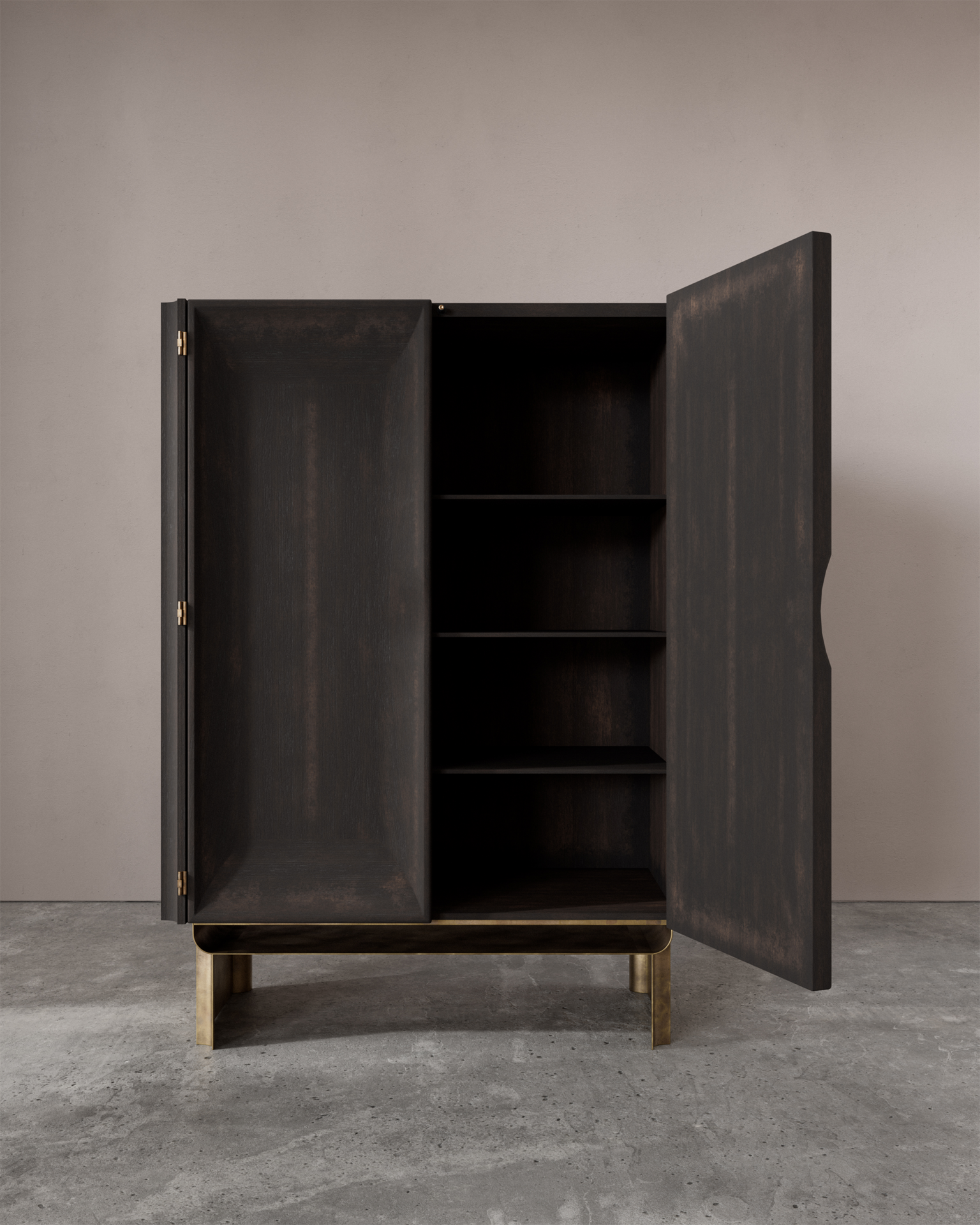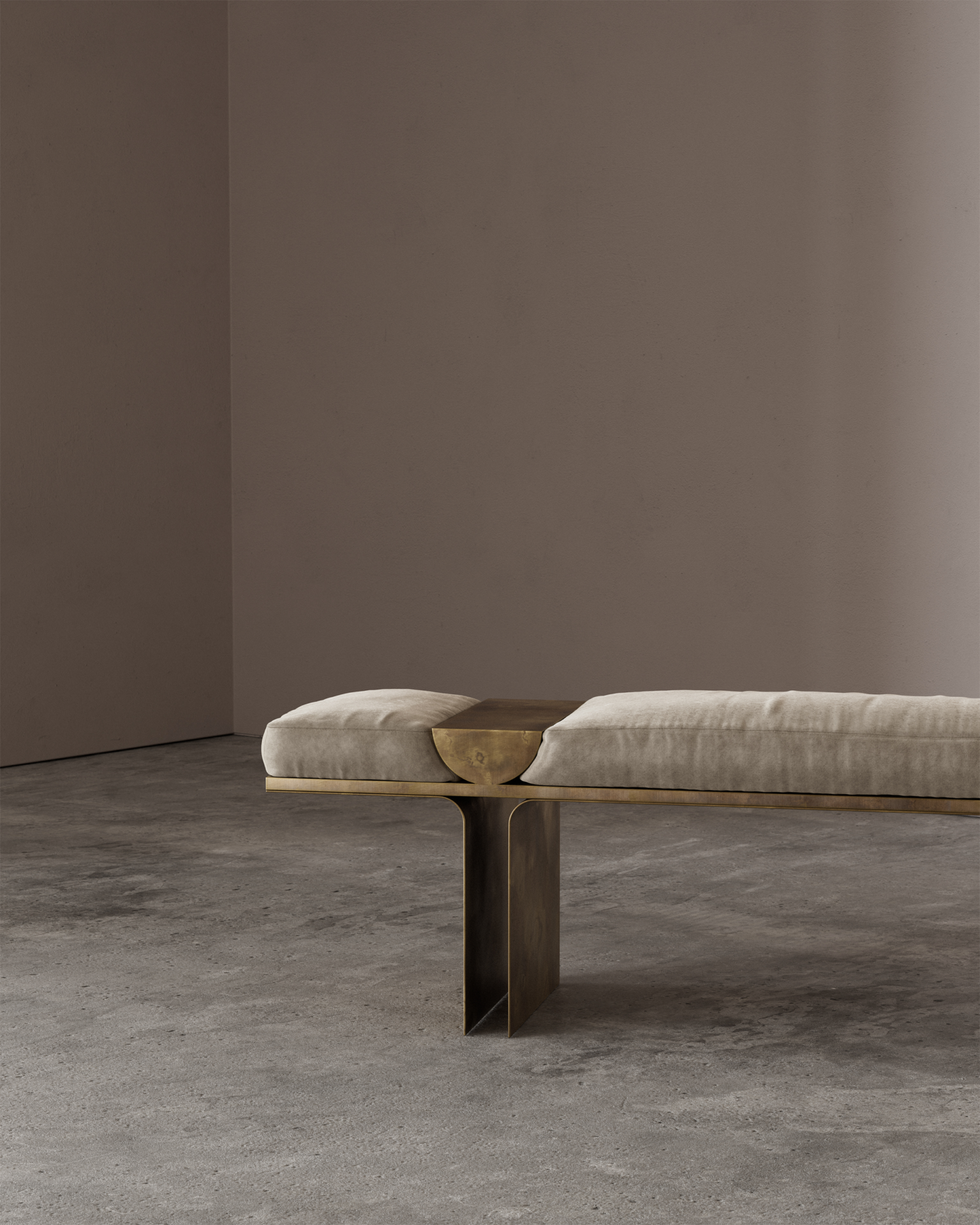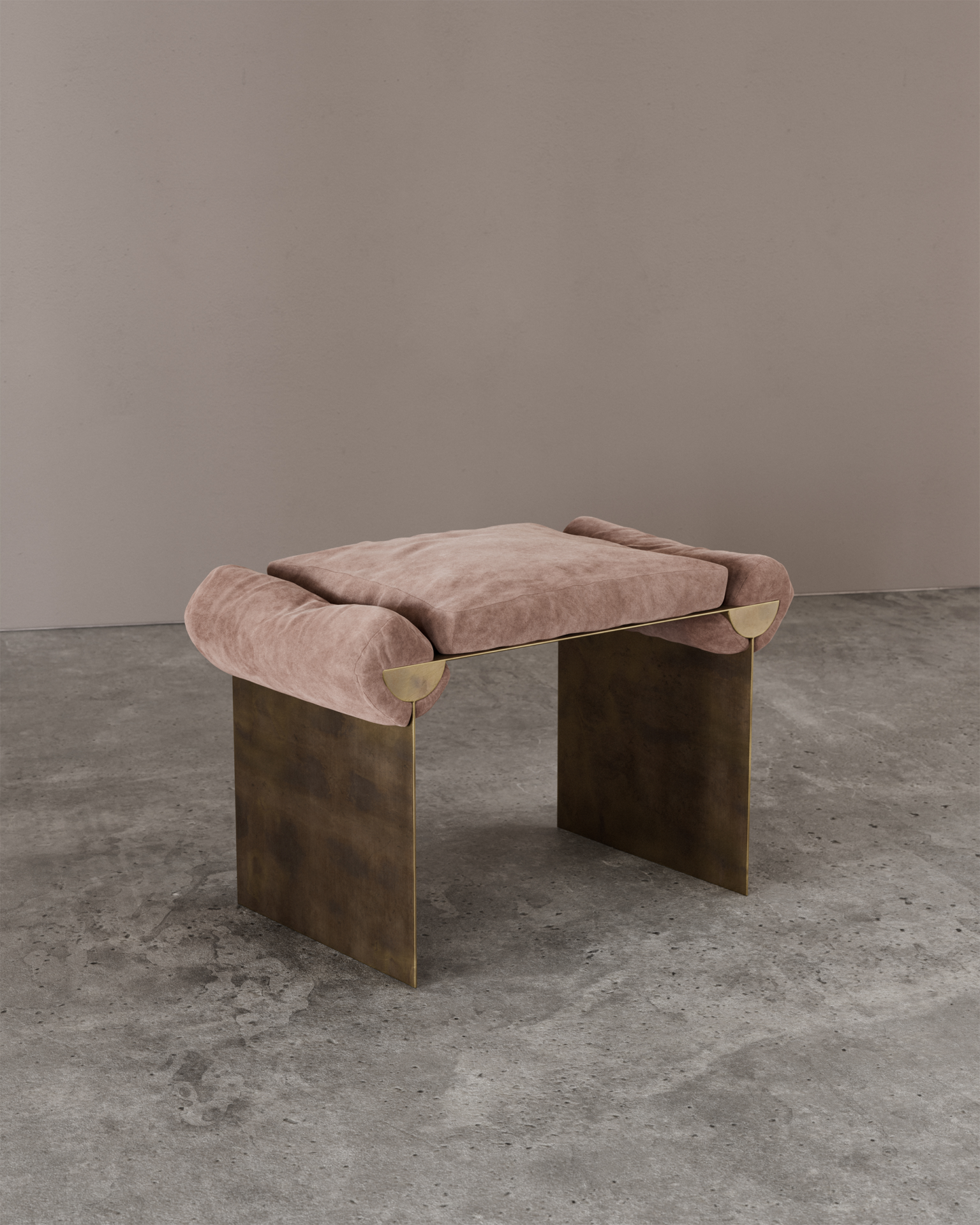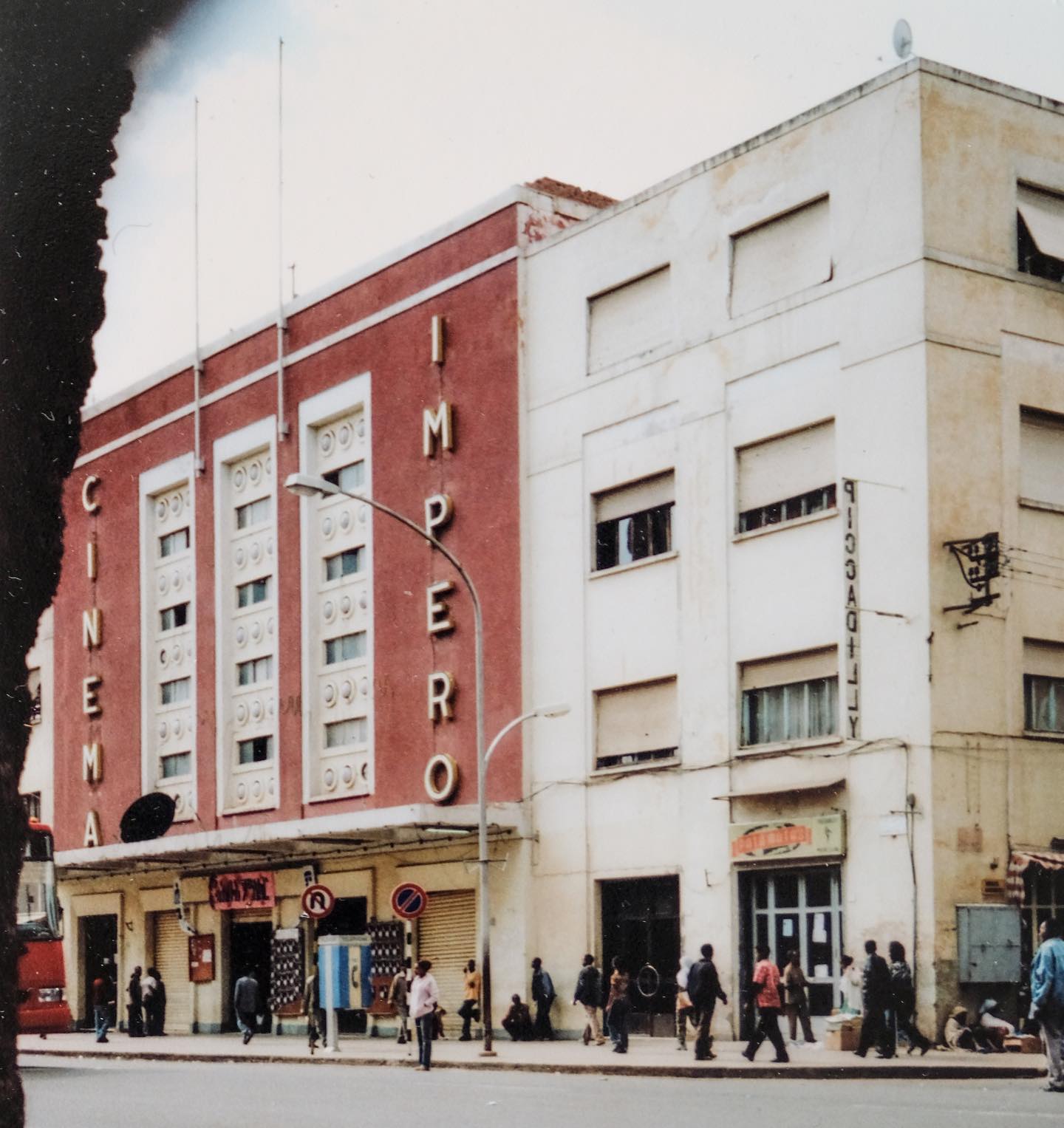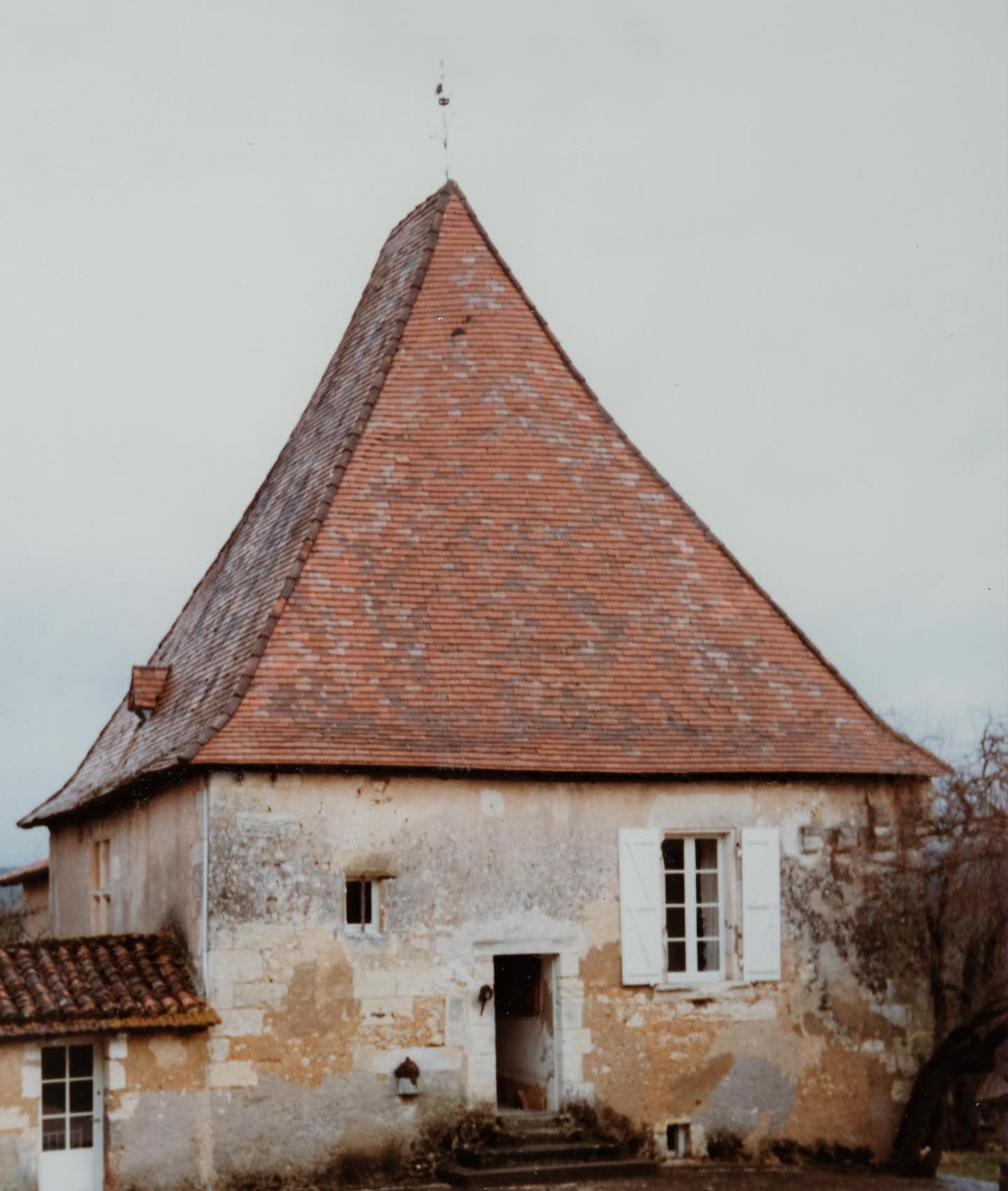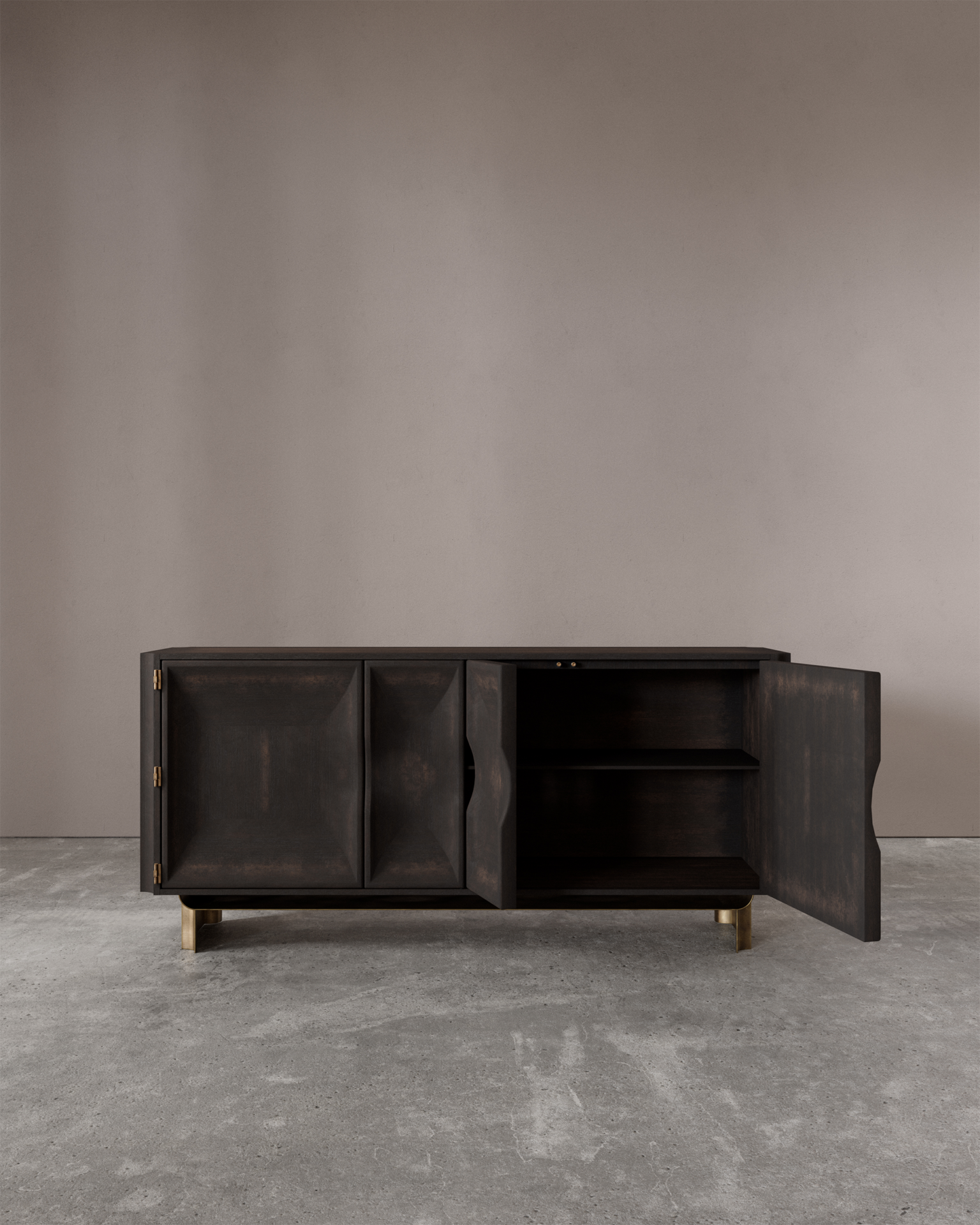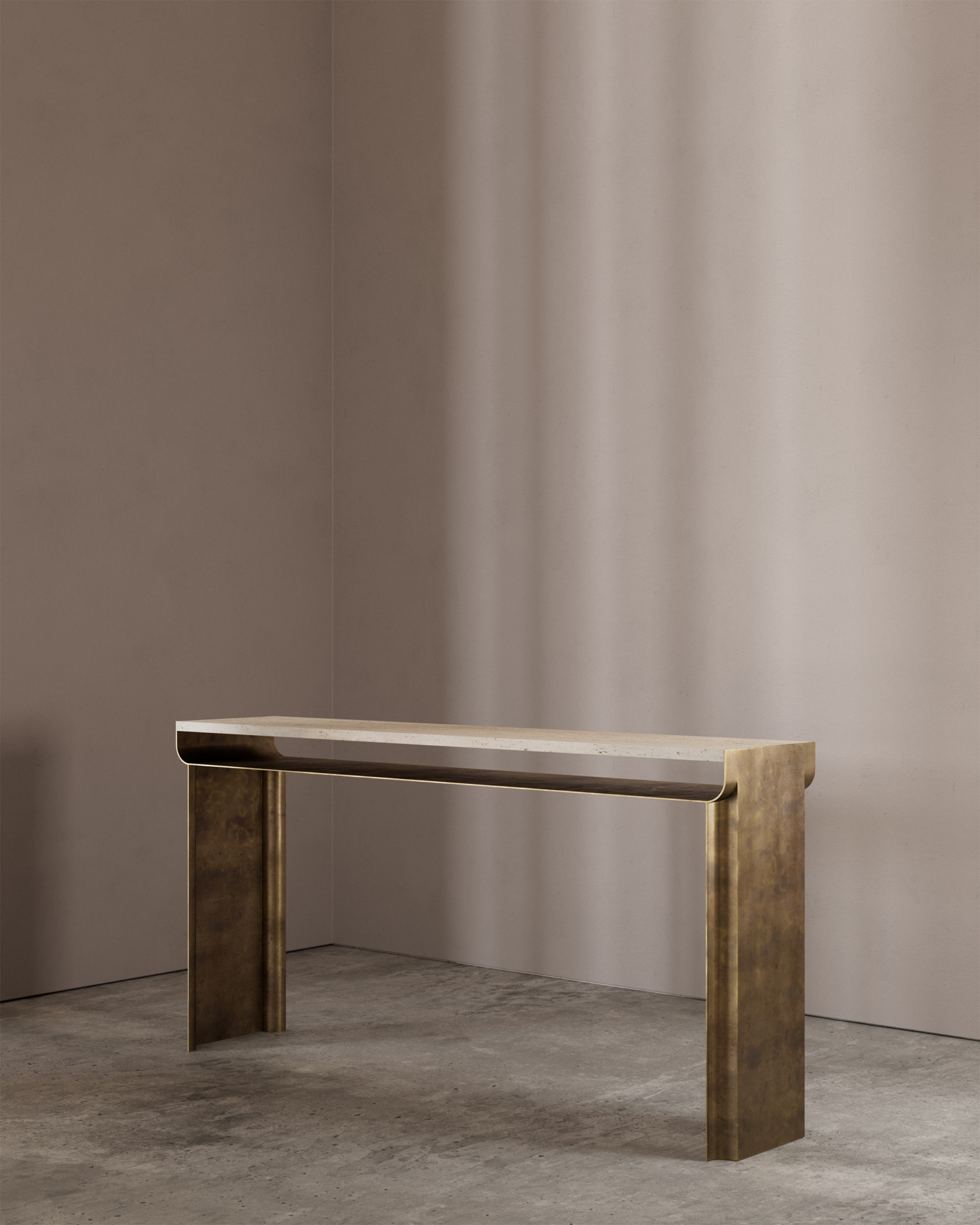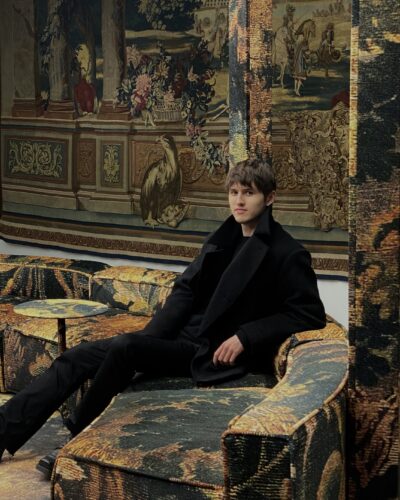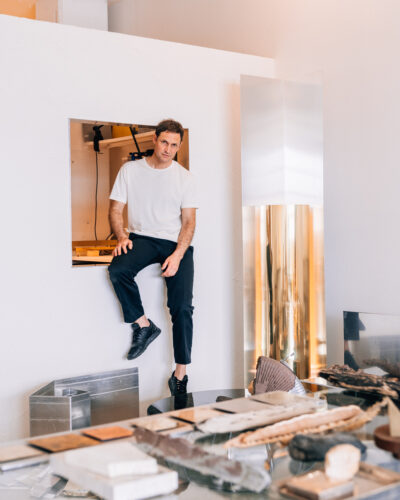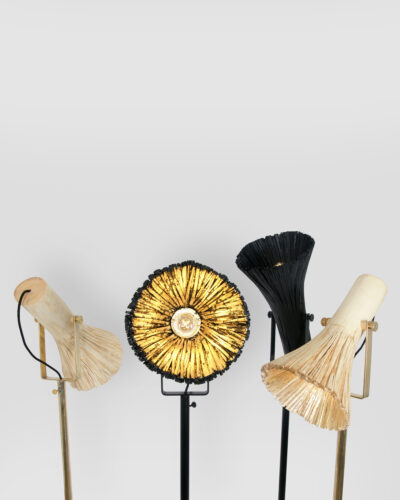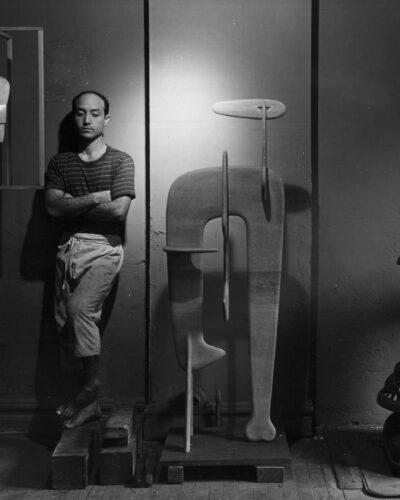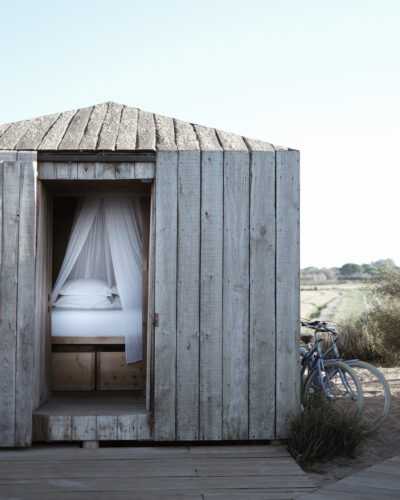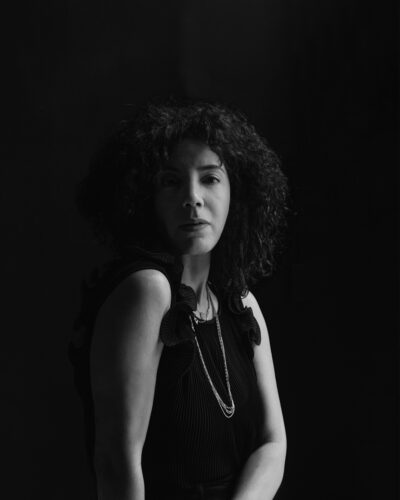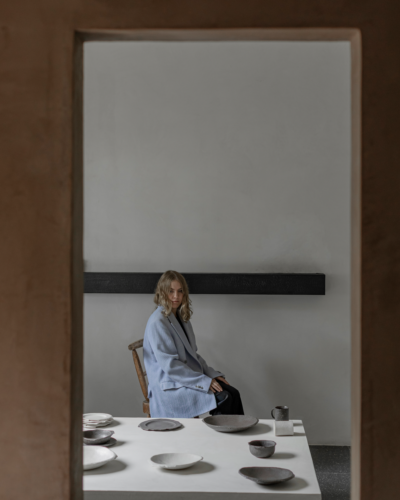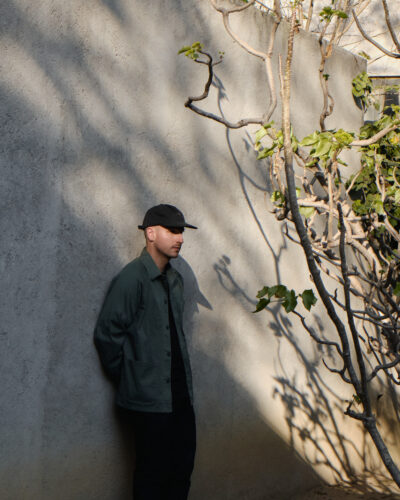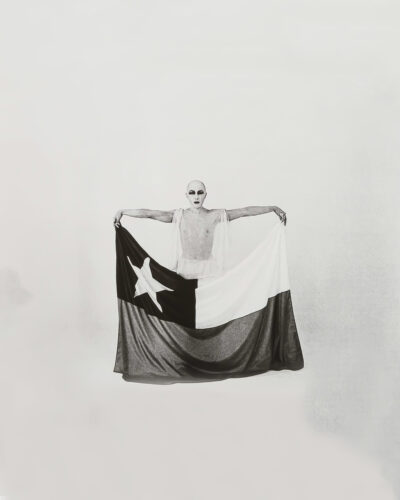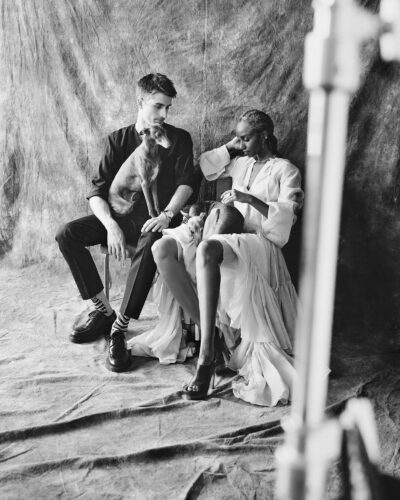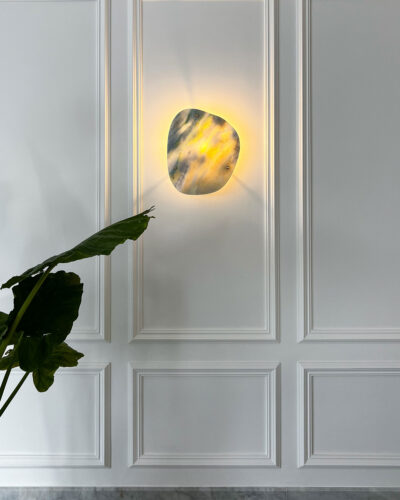The Verima Stool has a certain decadence, a vintage type of glamour. Its crisp, architectural base, made in sheet brass, is offset by its dappled, patinated finish and dusty pink velvet upholstery. Azamit explains that in Abyssinian culture, “the stool is something quite iconic. Traditionally, every household has a stool – which is called ‘bortchuma’. They’re three-legged and made of wood – so visually, they have no connection to what we designed, but, for me, it represents that place, that memory. And the same for the bench; in front of every house in Abyssinia, there will be a bench where the elderly sit outside their home and watch the world pass by – it’s the vision I have of my great grandparents, who lived in a small village. To me, that’s home.”
The Mebeli bench features the same upturned semi-circular profile as the Verima Stool, which was inspired by “some of the buildings in Asmara in Eritrea. Asmara has a lot of Art Deco architecture, so we brought some of these shapes into our initial designs. [For the stool and bench] we were playing around with this half-circle shape to see how it could be wrapped or enveloped.” Offering two different interpretations, the stool features semi-circular ‘wings’ that are completely encased with upholstery, whilst the same shape acts as a divide along the bench’s length – inserting itself within the upholstered upper to create a dialogue between the two contrasting materials. The divides create a ‘header’ and ‘footer’ of sorts, having an anthropomorphising effect, and one imagines absent-mindedly pushing one’s fingers between the plush cushions and the cool metal, following its smooth curvature.
Two sheets of paper-thin brass form each leg of the Mebeli, between which a gap is created – a space for light to enter and, conversely, a place of shadowy depths. Layers, doubles and mirror images can be found throughout the collection: in the travertine and brass surfaces that run parallel on the Derima Console; in the brass stands of the credenza and armoire; and in the coupling of the Begoni side tables. Nesting together, one inside the other, like Russian Dolls – the Begoni side tables are reminiscent of Roman columns. Azamit notes that “their different heights and different thicknesses emphasises the design – it gives them dimension, and styling-wise, it’s more interesting [as a pair].”
A chunk of milky travertine – the size and shape of a generous gateau – is wrapped in a thin outer casing of brass that is cut away to reveal a cavernous interior. A visual feast and a feat of engineering. The motif of the quarter-circle repeats, in different guises, throughout the collection, and offers an architectural flourish to the seeming simplicity of the cylindrical form. “It was important that there was a link or thread between the pieces. We wanted there to be a reference between them all, that they make sense together … and so we brought that design detail of the quarter-circle into all of our products.”
